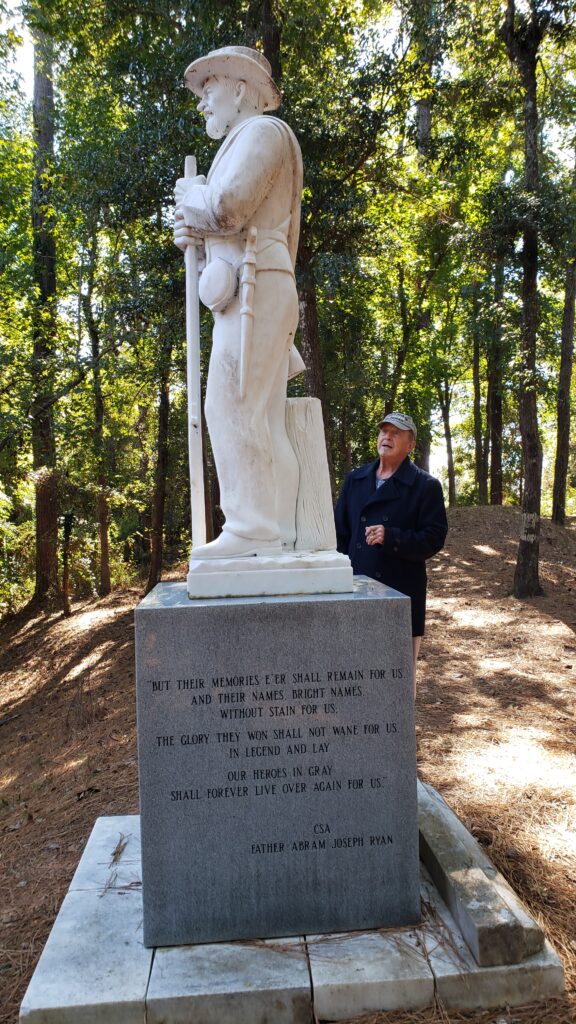The trail to Boquillas Canyon is well marked. It begins at the base of Sierra del Carmen, the Carmen Mountains. A monument to nature’s forces, they show themselves as a series of cliffs rising several thousand feet above the surrounding plain and stretch from America into Mexico for nearly as far as the eye can see. A permanent immovable wall across the desert. Here at the border, along the Rio Grande River, are rarely as simple as they appear.
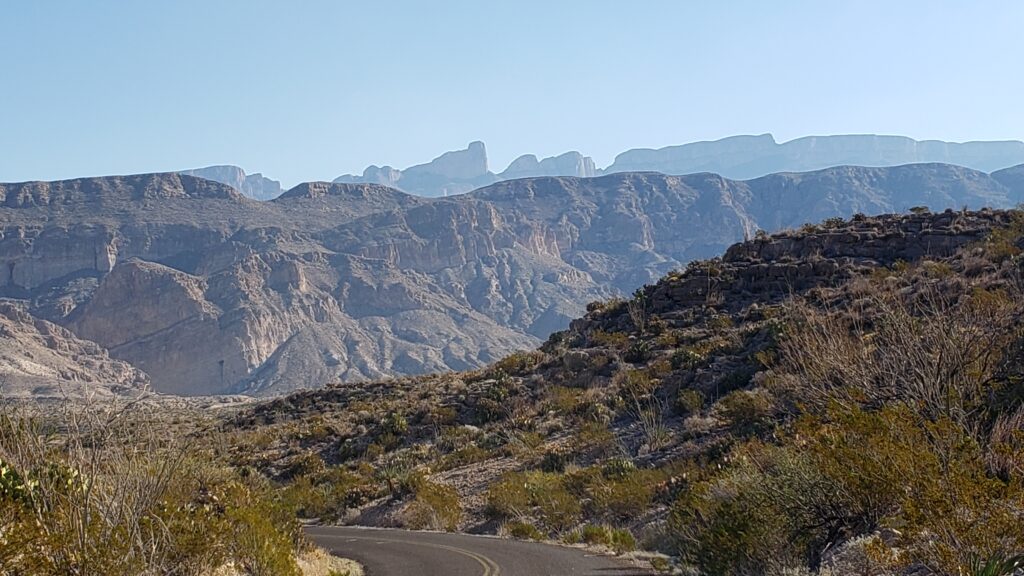
The trail rises up a steep finger of rock and rubble that has been falling from the cliffs of Sierra del Carmen for thousands of years. As it falls the occasional thunderstorm drops rain that washes down the steep slopes creating arroyos or gullies as it runs toward the Rio Grande River carrying rocks and silt and sand. The river accepts the silt laden water and puts it to its own use carving the land. Over tens of thousands of years, as the rock of the Sierra del Carmen uplift rose, the river cut through it like a liquid knife creating a canyon with near vertical walls a thousand feet high. The canyon came to be called Boquillas del Carmen, the Mouth of Carmen.
Once over it one walks a path through the tall green river cane that provide welcome relief from the desert sun the remaining half mile to the canyon entrance. It is at the mouth of the canyon where I met Jesús. A Mexican, he plies his trade of singing songs for tips and selling trinkets to tourists who have come to see the entrance to the canyon. He has received some recognition. There are a few videos on YouTube. Mostly by tourists like me. They call him the Singing Jesus of Boquillas Canyon.
As I walk the along through the cane I wonder if Jesús will be here. He is 70 or so. His eyesight is poor and last year his knee was giving him trouble. It’s a 4 mile walk from the town of Boquillas to here. Perhaps he has become too infirm to walk out to the canyon or even live in the remote Mexican town of Boquillas. Soon it will be Christmas, the beginning of peak tourist season in this area.
As walk I see something through the cane. Not Jesús but another man standing by a horse. He is not looking in my direction. He’s wearing a baseball cap back to, dark glasses and is sporting a beard. If he were standing next to a motorcycle he would be called a biker.
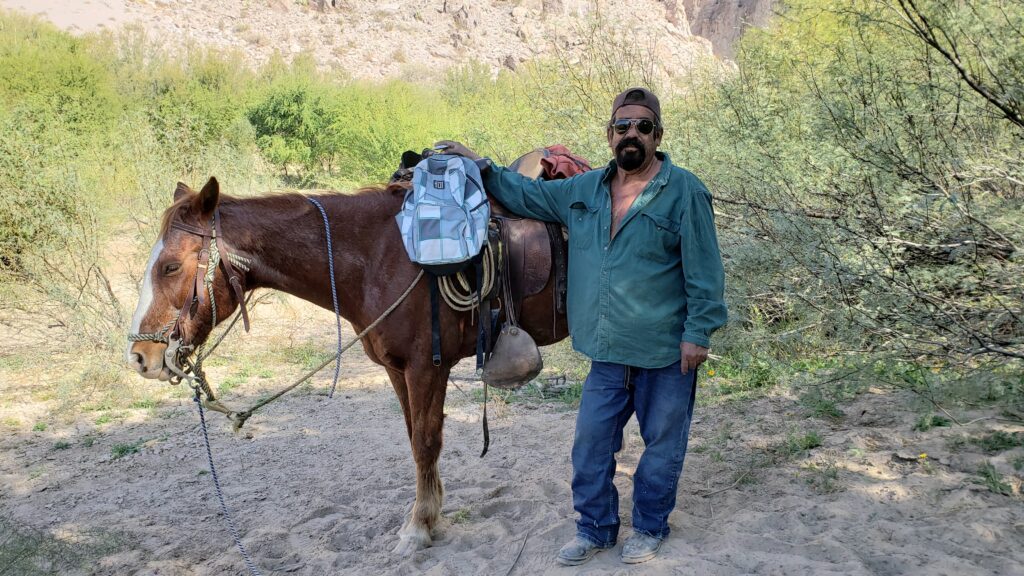
“Hola.” I call out.
He turns, “Hola amigo. You buy something? I have tamales?”
“You make them?”
“Mi mujer. Wife. Bueno tamales.”
“How much?”
“Six tamales ten dollars. Are chicken. Chicken tamales.”
“I’ll get them on my way back.” as I draw a U in the air with my finger.
“Sí. Estoy aqui. I be here.”
“Is Jesús here?”
“Jesús? No. He no come.” He puts his hand on his knee. “Malo. Bad.”
“Is he in Boquillas?
“Boquillas or Muzquiz.” he shrugs. “Who knows.”
“What is your name?”
“Marcilino.”
“I’m Alan. Pleased to meet you Marcilino. I’ll walk down to the canyon. Tamales on the way back.”
“Sí Alan. Bueno.”
It all adds up. Jesús was having a hard time getting here last year. It will be a loss with out Jesús singing ‘ay yi ya yi’ echoing from the canyon.
Where the cane ends is where Jesús always was. I walk out of the cane. No trinkets on the banking. No one standing on the other side. Silent except for the ripple of the water flowing into the canyon. It all adds up except for the canoe. The red canoe on the opposite bank, half hidden behind a log,. Jesús had a red canoe in which he crossed the river to sing and sell his trinkets. Did he abandon it? Unlikely I think for it would have some value. If he had abandoned it someone would have taken it. Perhaps things are not so simple as Marcilino has made them appear.
I walk back. Marcilino is laying out his trinkets on a weathered piece of wood. Again he does not hear me approach.
“Hola.” I say.
He looks up. “Hola amigo. You like.” he says waving at the goods on the plank.
My guess is Marcilino knows more about Jesús than he has let on. I will play along.
“Tamales?”
“Si”
“One bag. Ten dollars. Dies si?”
“Si.” he says as reaches in the pouch tied to the saddle and hands me a bag of warm tamales.
“Gracias.” I say as hand him a 10 dollar bill.
“Gracias amigo.”
“I’ll be back tomorrow.”
“Comida, food. You bring. Comida por mi mañana?”
“I’ll see what I can find. Adios amigo.”
“Adios.”
The next morning is sharp and cool. Below freezing during the night. Perhaps Marcilino will not come. I hike over the stone and rock and down to the sand and cane of the river valley. In the miniature bluffs created in the sand by wind or water one can see an occasional disturbance. A miniature landslide here and there has occurred over night. The land is moving. At its own pace but moving nonetheless.
I spy Marcilino through the cane. He is mounted on his horse.
“Hola.”
“Hola amigo. Como estas?”
“Bien. Your tamales es bueno.”
“Quieras mas? Buy more?”
“No, no we go to Terlingua today.”
He looks disappointed.
“I bring you something.” I unzip my small waist pouch, pull out a bag of trail mix.
“Gracias amigo. And for you,” he leans over from the saddle, “Jesús is here.”
“Jesús?”
“Si” He points further down the trail. “Today he come.”
“Gracias amigo. Gracias.”
I walk down the trail. As the cane thins and then disappears, I see Jesús standing on the opposite bank
“Hola Jesús” I call.
“Hola amigo. Quien estas?”
“Alan”
“Alan. I come. Un momento.” He calls back.
Jesús picks up his little bag of trinkets, climbs I his red canoe and paddles across the river. He has difficulty getting out and on to shore. It’s clear his knee has gotten worse over the year.
“Buenos dias my friend.” he says limping up the banking carrying a small plastic jar and a stone. He places a handful of pebbles in the jar.
“I put on trail.” and he turns heading back the way I came, sets the jar and stone down next to the trail and returns.
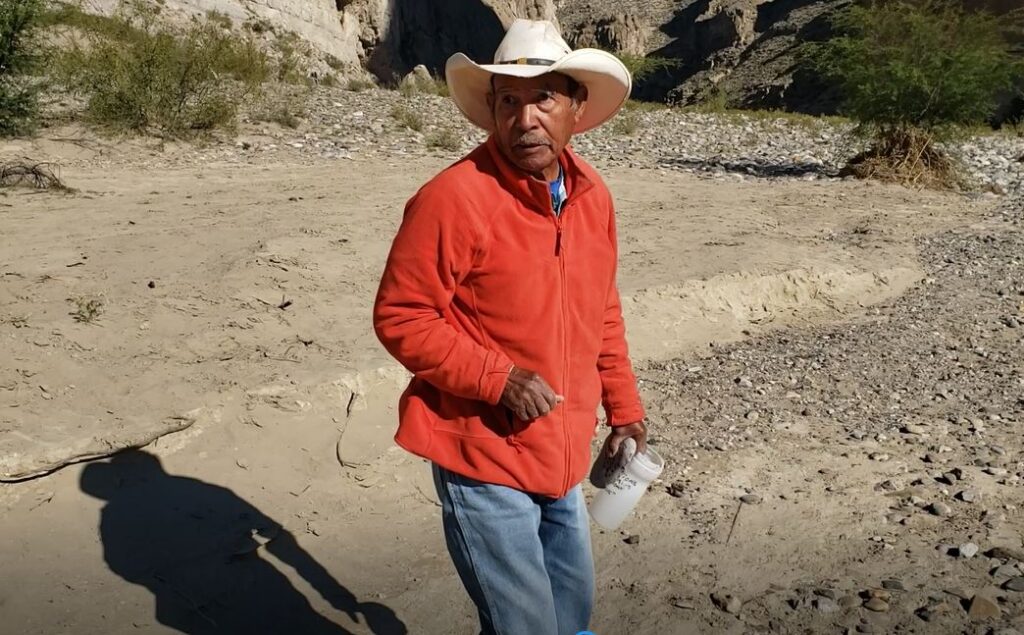
“Como estas?” I ask.
He shrugs and points to his knee. “No bien.”
He says he has a hard time getting out here because of his knee. He has been to the doctor in Muzquiz but his treatment does not help. He can’t afford to go to a doctor in Monclova or Monterrey. Today his nephews helped him get here.
He needs to come he explains. “Need comida, food. Need dinero to buy food.”
I buy more of his trinkets than I need.
I assure him I will bring him some food tomorrow when I cross to the town of Boquillas and I will bring some friends to buy his wares.
“Manaña I wait en mi casa.”
“Where is your casa?”” I ask.
“Felipe at river. Felipe show you.” He said referring to his nephew we met 2 years ago.
I assure him I’ll see him in Boquillas tomorrow morning. I wish him well and begin walking to the trail. I fear this is the last year he’ll be able to make the 4 mile journey out here every day. He has one room at his brother’s house but where will he get the money for food. Maybe I can meet him in Boquillas next year. Maybe.
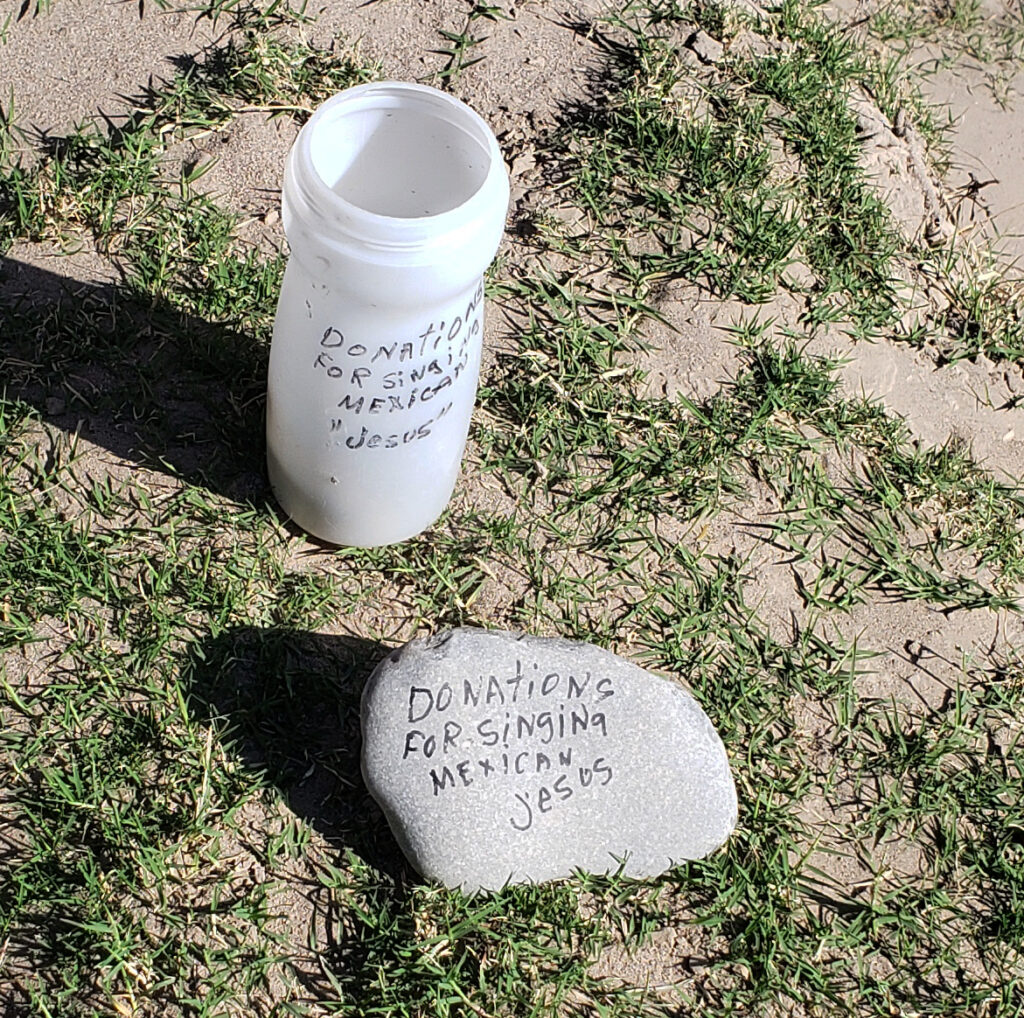
I walk past the small plastic jar and stone he has placed on the trail.
“Donations for the singing Mexican Jesus”. It is nearing Christmas. This the busy season for Big Bend. Perhaps he will do well.
“For you amigo.” I hear him call out.
I turn.
“And your amigos. Feliz año nuevo.”
And then he began to sing.


